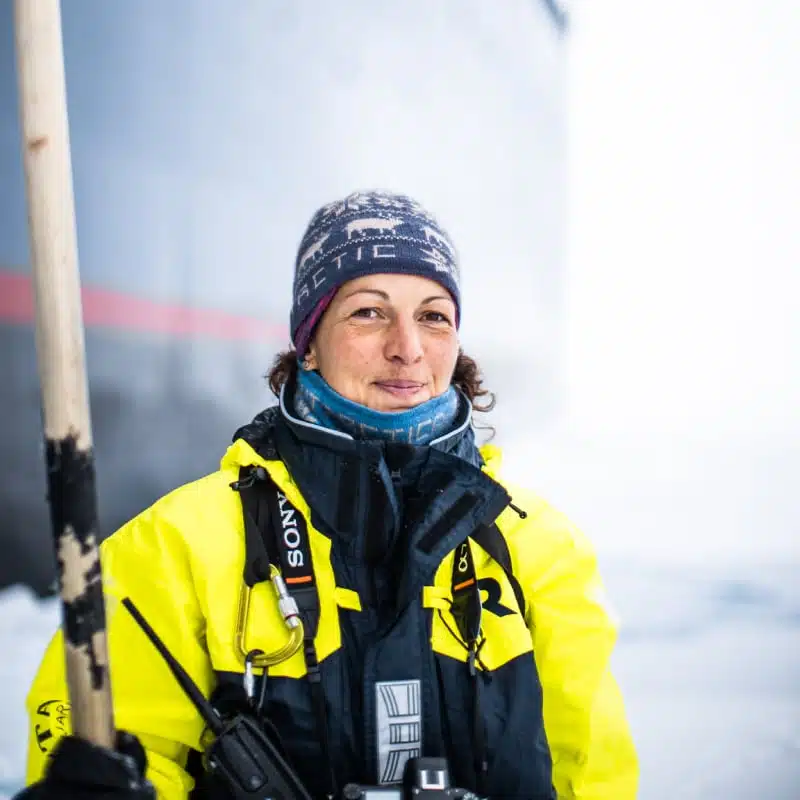A scientific and human adventure
As an enthusiast about the polar regions, naturalist-guide and scientific mediator onboard Le Commandant Charcot, Daphné Buiron did her thesis on the science of ice cores. In 2011, she embarked on L’Astrolabe to fulfil one of her greatest dreams: to spend a year in Antarctica, on the French base of Dumont d’Urville, in Adélie Land.
“Wintering in isolation at the base camp for eight months ,with no access to extra supplies.”
The excerpts from her diary tell of the solitary yet mutually supportive life of the researchers at the end of the world:
December 2011. The adventure begins. I started my winter season at the Dumont d’Urville base, on Petrels Island, where I got a job as a glaciological chemist at the Paul-Emile Victor Institute, as part of a civic service volunteer scheme. During the Antarctic summer, between November and February, the base welcomes up to 100 people, so I decided to winter on site. For several months, there will be about thirty of us, including four women. For a long time, only men were allowed to overwinter in Adélie Land. Today, more and more women are being admitted, although they are still in the minority.
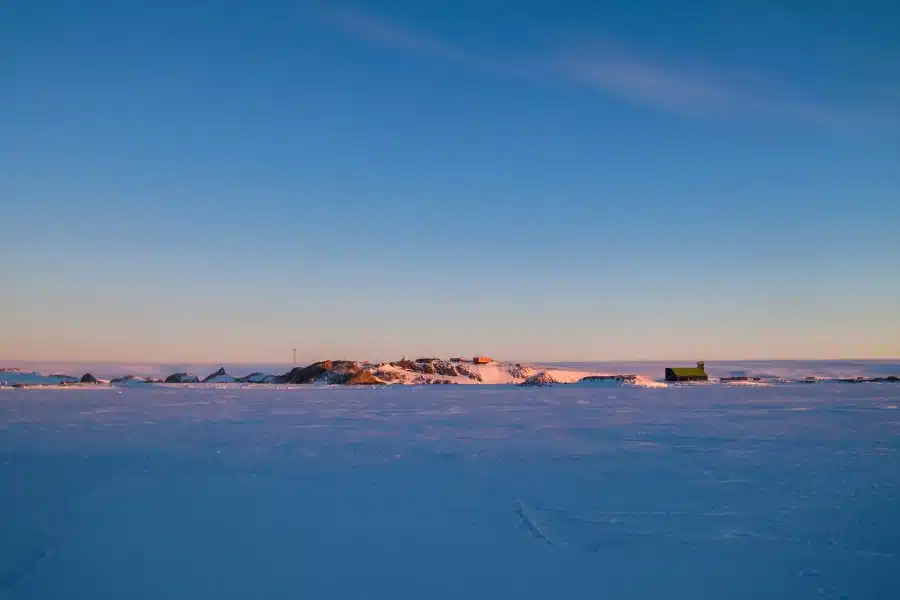
Adelie Land
Located between the 132° and 140° meridians, and between the South Pole and the approximate latitude of 67°S, Adélie Land was discovered by the French explorer Jules Dumont d’Urville on 21 January 1840. Sailing with his crew aboard L’Astrolabe and La Zélée, he landed on the islet of the Rocher du débarquement, in the Dumoulin Islands archipelago, about 4 km from the ice cap. He decided to name Adélie Land after his wife Adèle. The current French station is located not far away, on Petrels Island.
The last apple
We are getting ready to spend a fully autonomous winter here. During the summer, the supply ship makes five rotations. When it leaves in February, after dropping off the necessities and the last of the food that we store in various refrigerators, we know it will not be back for another eight months. While the food is very varied and the meals delicious, we know that the supply of fresh produce is diminishing quite rapidly. At the end of August, enjoying the last apple is a bit scary – but we’ll end up eating canned desserts by the end of winter!
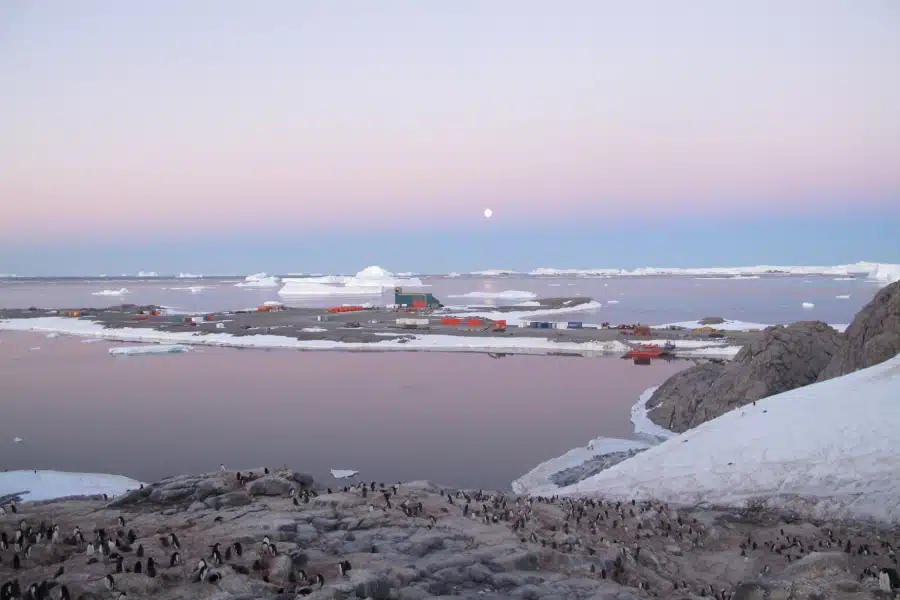
In good company
After the last of our colleagues depart at the end of summer, even the vast majority of the wildlife starts leaving us. Birds, seals and all living creatures leave the area, migrating towards the open seas. This is just the period when the emperor penguins gather their colony together and settle at the bottom of the island. It is difficult to describe the wisdom you feel emanating from these animals, and the importance of standing with each other to brave the harsh winter weather. They’ve left an indelible mark on my mind. We must remain watchful over and respectful of the wildlife that makes its home here. The living quarters are connected to each other by metal grilles. This stops you getting lost during blizzards and more especially stops you from walking into the nests of the Adélie penguins, whose gigantic colony occupies the whole island in summer.
A steady pace
This small region, which seems overpopulated in summer, is doubly charming in winter. As the ice pack forms, the playground extends to the entire archipelago of Pointe Geologie and lends itself to walking and exploring this fabulous land of ice. However, leisure time is rare. The pace of work is fast, divided between science and household tasks. Helping each other is therefore essential, as is being skilled in multiple areas. The balance of this community life is based on understanding each other well, goodwill and being attentive. You also have to be curious, flexible and motivated to go out whatever the weather and create some unexpected memories! During this period of the year when we are on our own, safety is also a priority and we do a lot of first aid and medical training.
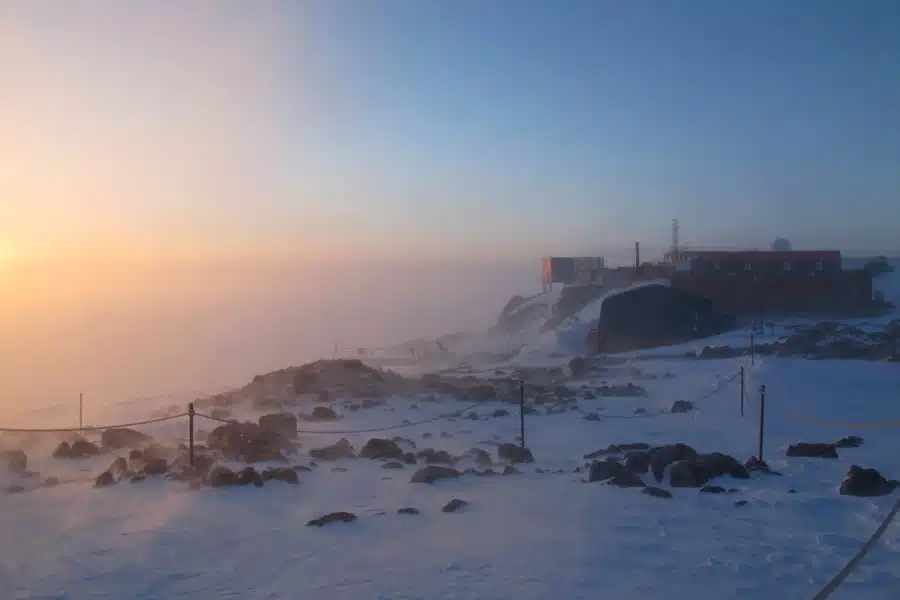
The Dumont D’Urville scientific base
This base was built in 1956 by the French Polar Expeditions, led by Paul-Émile Victor, in order to establish a strategic territorial position for France on the Antarctic continent and to begin the first scientific research programmes in the southern region. While Antarctic science is of real interest to France, keeping the base active also means it has a say in the Antarctic Treaty.
As for me, my work in atmospheric chemistry is very demanding and requires a great deal of meticulousness. Three times a day I go to three different points on the island to collect air samples. I then analyse them in the laboratory. I also maintain lots of instruments and collect data from weather stations. And when I have some free time, I assist my colleagues in marine biology and ornithology with their wildlife research. Once a month, we go to the nearby glacier to measure the height of a glacier marker field. It’s a round trip on foot of over 3 hours in temperatures of -20° C, in low light conditions. We come back with our eyelashes and hair covered with thick frost.
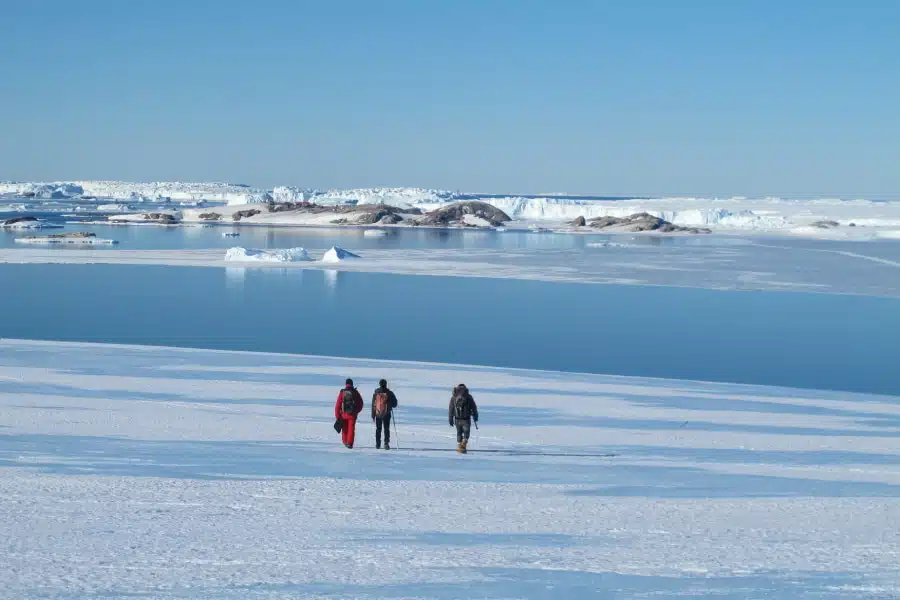
Celebrations
After several months of a spartan routine, Midwinter’s Day, 21 June, comes around and this is one of my best memories from Adélie Land. It is a public holiday, as is the tradition. The Midwinter festival marks the middle of winter and has been celebrated in Antarctica since the 19th century by all the Antarctic bases. The festivities last all week and are prepared several months in advance. On the morning of 21 June, we gathered to watch the sunrise around 11:00 a.m. At about 3 p.m., it went back to bed. At 5:00 p.m., we set out on the ice floes by the light of our headlamps. We walked to a large iceberg with one sheer vertical side. Using an old camera, we projected a silent film by Georges Méliès onto the ice. Then, we lit torches and returned to the base under the Southern Lights. It was an unforgettably romantic moment.
The Antarctic Treaty
The signing of the Antarctic Treaty in 1959 meant the continent was protected, prohibiting all territorial claims and mining, dedicating this deserted territory to peace and science.
Photo credits: © Daphné Buiron
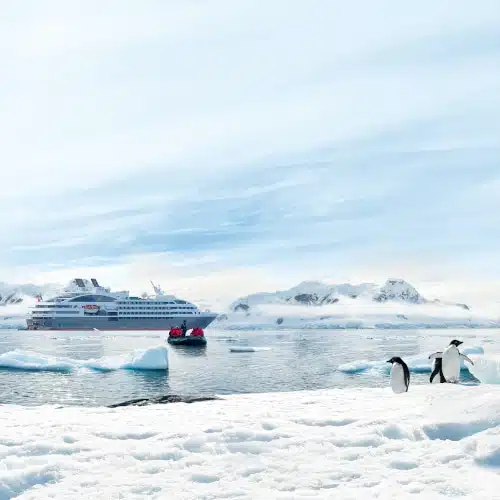
PONANT takes you there
Explore Antarctica with PONANT

